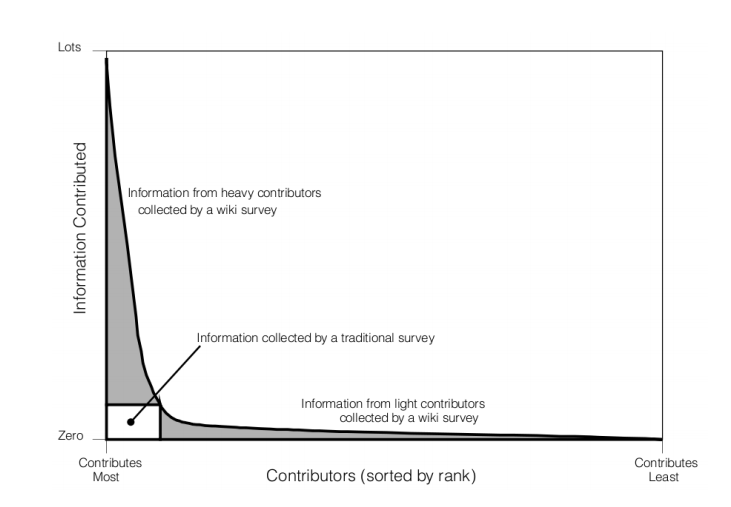Looks like Wikipedia has its own 1%. I knew that, but this application to surveys is novel and interesting.
Inspired by Wikipedia, Social Scientists Create a Revolution in Online Surveys

Inspired by Wikipedia, Social Scientists Create a Revolution in Online Surveys
Most of the information on Wikipedia comes from a tiny proportion of users. Now social scientists are collecting data in a similar way, allowing participants to design surveys as they contribute. ..... “Just as Wikipedia evolves over time based on contributions from participants, we envision an evolving survey driven by contributions from respondents” ..... a wiki survey. This starts with a set of seed questions but allows respondents to add their own questions as the survey involves. ..... this format allows participants to respond to as many choices as they wish. They call this property greediness. ...... These included ideas that would have been unlikely to emerge through other data gathering methods, such as “Keep NYC’s drinking water clean by banning fracking in NYC’s watershed” and “Plug ships into electricity grid so they don’t idle in port—reducing emissions equivalent to 12,000 cars per ship.” ...... “If Wikipedia were to allow 10 and only 10 edits per editor—akin to a survey that requires respondents to complete one and only one form—it would exclude about 95% of the edits contributed”


